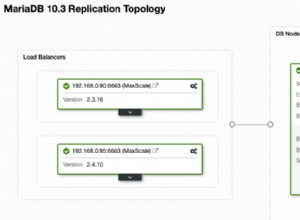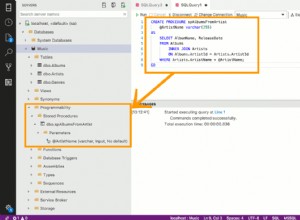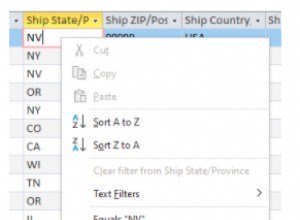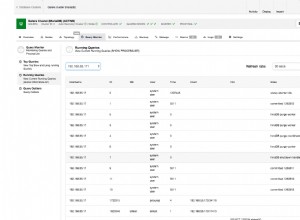La cosa più vicina a un'intersezione di array che mi viene in mente è questa:
select array_agg(e)
from (
select unnest(a1)
intersect
select unnest(a2)
) as dt(e)
Ciò presuppone che a1 e a2 sono matrici a dimensione singola con lo stesso tipo di elementi. Potresti racchiuderlo in una funzione simile a questa:
create function array_intersect(a1 int[], a2 int[]) returns int[] as $$
declare
ret int[];
begin
-- The reason for the kludgy NULL handling comes later.
if a1 is null then
return a2;
elseif a2 is null then
return a1;
end if;
select array_agg(e) into ret
from (
select unnest(a1)
intersect
select unnest(a2)
) as dt(e);
return ret;
end;
$$ language plpgsql;
Quindi potresti fare cose come questa:
=> select array_intersect(ARRAY[2,4,6,8,10], ARRAY[1,2,3,4,5,6,7,8,9,10]);
array_intersect
-----------------
{6,2,4,10,8}
(1 row)
Nota che questo non garantisce alcun ordine particolare nell'array restituito, ma puoi risolverlo se ti interessa. Quindi potresti creare la tua funzione di aggregazione:
-- Pre-9.1
create aggregate array_intersect_agg(
sfunc = array_intersect,
basetype = int[],
stype = int[],
initcond = NULL
);
-- 9.1+ (AFAIK, I don't have 9.1 handy at the moment
-- see the comments below.
create aggregate array_intersect_agg(int[]) (
sfunc = array_intersect,
stype = int[]
);
E ora vediamo perché array_intersect fa cose divertenti e un po' goffe con i NULL. Abbiamo bisogno di un valore iniziale per l'aggregazione che si comporti come l'insieme universale e possiamo usare NULL per quello (sì, questo ha un odore un po' strano ma non riesco a pensare a niente di meglio dalla parte superiore della mia testa).
Una volta che tutto questo è a posto, puoi fare cose come questa:
> select * from stuff;
a
---------
{1,2,3}
{1,2,3}
{3,4,5}
(3 rows)
> select array_intersect_agg(a) from stuff;
array_intersect_agg
---------------------
{3}
(1 row)
Non proprio semplice o efficiente ma forse un punto di partenza ragionevole e meglio di niente.
Riferimenti utili:
array_agg- crea aggregato
- crea funzione
- PL/pgSQL
unnest




